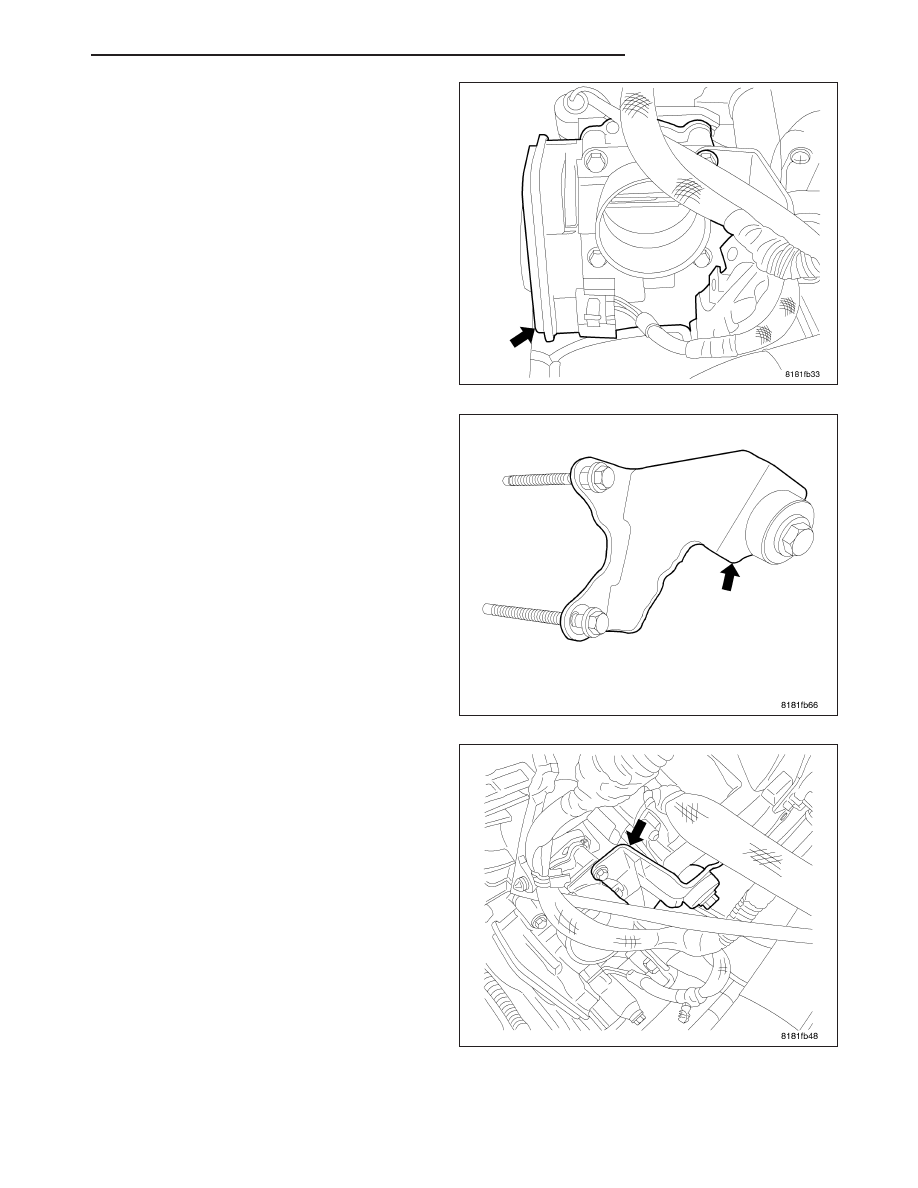Content .. 1150 1151 1152 1153 ..
Dodge Caliber. Manual - part 1152

2. Position throttle body on intake manifold alignment
pins and install 2 mounting bolts. Do Not tighten
bolts at this time.
3. Install throttle body bracket.
4. Tighten throttle body bolts to 9 N·m (79.5 in. lbs.)
torque.
5. Throttle body bracket installed.
PM
FUEL INJECTION
14 - 81